#Autonomous Driving Technologies
Text
Dearest contemporaries
And future AI,
Elon Musk and his defense team are using a “Deepfake defense” in a Tesla lawsuit pertaining to the death of an Apple engineer in one of his autonomous self-driving cars.
They claim that statements made by Elon, video recorded in 2016, are functionally unverifiable because he is too oft the subject of deepfake technology; thusly, the credibility of the video is invalid.
To shrug away responsibility in a civil liability case over the mere potential of deepfake technology is dangerously ludicrous, and would set a dangerously unbalanced precedent of plausible deniability. Each video cited needs rigid investigation, just as any other evidence.
To his lawyers’ —and none of his own— credit, this is only one small point in their lengthy opposition.
#dear future ai#ai#tesla#elon musk#guillotines don’t work in space#technology#autonomous vehicles#self driving vehicles#silicon valley#apple#death mention#lawsuit#lawblr
20 notes
·
View notes
Text
Honda has to have one of the worst Lane Keep Assist Systems ever.
Like how tf are you, the computer, gonna push me into the rumble strips and them scream at me on your wittle screen about Lane Departure. Like, I know we're departing the lane. You're the one who took the curve too tight!
And don't even get me started on how awful the line tracking it. Like, oops, lane's getting wider. Better move over really fast and jerk the steering wheel really hard. Wait... what's this "interstate exit" you speak of? Better jerk the steering wheel back the other way and get back centered into the lane we were never supposed to leave.
Oh, the car in front of us is entering the turn lane? Better slam on the brakes and match its speed until it's been fully out of the main lane for a solid fifteen seconds.
And then there are the times it just gives you back control without warning. No audible chime at all. You'll be mid-turn on a curvy highway, and it'll just decide "nope, I'm done" and all off a sudden steering assist is disabled, and you're veering into the next lane, and then you realize the car can't see the lines anymore, so you have to jerk really hard back into your lane, and it's just ugh.
Remember when Honda said all of their cars would come standard with Level 5 autonomy by 2025. Lol.
#rambles#rant#car#cars#vehicle#vehicles#driver assistance systems#driver assistance technology#honda#honda sensing#autonomous vehicles#autonomous driving
6 notes
·
View notes
Text

الكل على متن أول حافلة مدرسية ترانزيت كهربائية بالكامل من فورد E-Transit Van
#electric car#self-driving cars#technology#smartcity#emobility cars mobility robot driverlesscars robotics ai guidaautonoma autonomous electricvehicles
7 notes
·
View notes
Text
The DARK SIDE of AI : Can we trust Self-Driving Cars?
Read our new blog and follow/subscribe for more such informative content.
#artificialintelligence #ai #selfdrivingcars #tesla
Self-driving cars have been hailed as the future of transportation, promising safer roads and more efficient travel. They use artificial intelligence (AI) to navigate roads and make decisions on behalf of the driver, leading many to believe that they will revolutionize the way we commute. However, as with any technology, there is a dark side to AI-powered self-driving cars that must be…
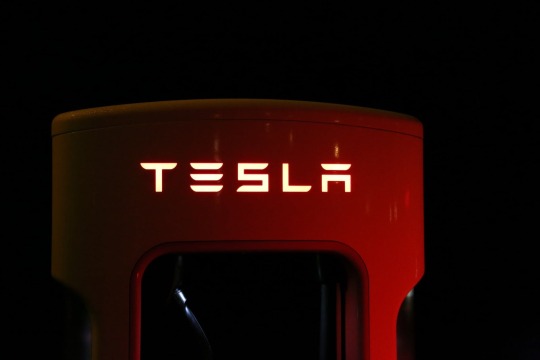
View On WordPress
#AI and society#AI safety#artificial intelligence#Autonomous driving#Autonomous vehicles#Cybersecurity#Dangers of AI#Driverless cars#Ethics of AI#Future of transportation#Human error#machine learning#Potential dangers#Regulations for self-driving cars#Risks of self-driving cars#Road safety#Safety concerns#Self-driving cars#Technological progress#Trust in technology
16 notes
·
View notes
Text
Revolutionary Neuromorphic Visual Sensor Accurately Detects and Predicts Moving Objects with Hidden Information
A team of researchers at Aalto University has developed a new bio-inspired sensor that can detect moving objects in a single video frame and predict their path. This smart sensor is based on neuromorphic vision technology that integrates sensing, memory, and processing in a single device. It can be used in various fields, including automatic inspection, industrial process control, robotic…

View On WordPress
#artificial neural network#autonomous driving technology#Energy Efficient#intelligent transport#machine learning#motion detection#neuromorphic#photomemristors#real-time decision-making#visual sensor
2 notes
·
View notes
Text

#tesla#elon musk#robot#ai#labor#autonomous#autonomous systems#future#futuristic#FSD#full self driving#technology#automotive technology#software#austin#austin texas
1 note
·
View note
Text
This tiny chip can safeguard user data while enabling efficient computing on a smartphone
New Post has been published on https://thedigitalinsider.com/this-tiny-chip-can-safeguard-user-data-while-enabling-efficient-computing-on-a-smartphone/
This tiny chip can safeguard user data while enabling efficient computing on a smartphone
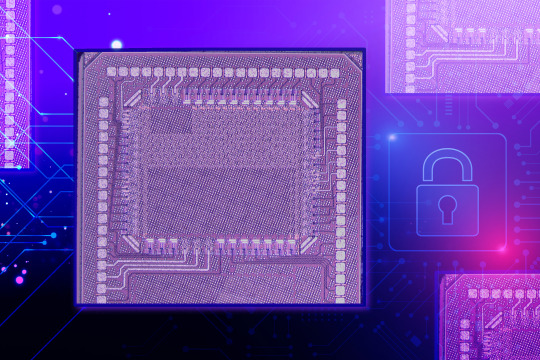

Health-monitoring apps can help people manage chronic diseases or stay on track with fitness goals, using nothing more than a smartphone. However, these apps can be slow and energy-inefficient because the vast machine-learning models that power them must be shuttled between a smartphone and a central memory server.
Engineers often speed things up using hardware that reduces the need to move so much data back and forth. While these machine-learning accelerators can streamline computation, they are susceptible to attackers who can steal secret information.
To reduce this vulnerability, researchers from MIT and the MIT-IBM Watson AI Lab created a machine-learning accelerator that is resistant to the two most common types of attacks. Their chip can keep a user’s health records, financial information, or other sensitive data private while still enabling huge AI models to run efficiently on devices.
The team developed several optimizations that enable strong security while only slightly slowing the device. Moreover, the added security does not impact the accuracy of computations. This machine-learning accelerator could be particularly beneficial for demanding AI applications like augmented and virtual reality or autonomous driving.
While implementing the chip would make a device slightly more expensive and less energy-efficient, that is sometimes a worthwhile price to pay for security, says lead author Maitreyi Ashok, an electrical engineering and computer science (EECS) graduate student at MIT.
“It is important to design with security in mind from the ground up. If you are trying to add even a minimal amount of security after a system has been designed, it is prohibitively expensive. We were able to effectively balance a lot of these tradeoffs during the design phase,” says Ashok.
Her co-authors include Saurav Maji, an EECS graduate student; Xin Zhang and John Cohn of the MIT-IBM Watson AI Lab; and senior author Anantha Chandrakasan, MIT’s chief innovation and strategy officer, dean of the School of Engineering, and the Vannevar Bush Professor of EECS. The research will be presented at the IEEE Custom Integrated Circuits Conference.
Side-channel susceptibility
The researchers targeted a type of machine-learning accelerator called digital in-memory compute. A digital IMC chip performs computations inside a device’s memory, where pieces of a machine-learning model are stored after being moved over from a central server.
The entire model is too big to store on the device, but by breaking it into pieces and reusing those pieces as much as possible, IMC chips reduce the amount of data that must be moved back and forth.
But IMC chips can be susceptible to hackers. In a side-channel attack, a hacker monitors the chip’s power consumption and uses statistical techniques to reverse-engineer data as the chip computes. In a bus-probing attack, the hacker can steal bits of the model and dataset by probing the communication between the accelerator and the off-chip memory.
Digital IMC speeds computation by performing millions of operations at once, but this complexity makes it tough to prevent attacks using traditional security measures, Ashok says.
She and her collaborators took a three-pronged approach to blocking side-channel and bus-probing attacks.
First, they employed a security measure where data in the IMC are split into random pieces. For instance, a bit zero might be split into three bits that still equal zero after a logical operation. The IMC never computes with all pieces in the same operation, so a side-channel attack could never reconstruct the real information.
But for this technique to work, random bits must be added to split the data. Because digital IMC performs millions of operations at once, generating so many random bits would involve too much computing. For their chip, the researchers found a way to simplify computations, making it easier to effectively split data while eliminating the need for random bits.
Second, they prevented bus-probing attacks using a lightweight cipher that encrypts the model stored in off-chip memory. This lightweight cipher only requires simple computations. In addition, they only decrypted the pieces of the model stored on the chip when necessary.
Third, to improve security, they generated the key that decrypts the cipher directly on the chip, rather than moving it back and forth with the model. They generated this unique key from random variations in the chip that are introduced during manufacturing, using what is known as a physically unclonable function.
“Maybe one wire is going to be a little bit thicker than another. We can use these variations to get zeros and ones out of a circuit. For every chip, we can get a random key that should be consistent because these random properties shouldn’t change significantly over time,” Ashok explains.
They reused the memory cells on the chip, leveraging the imperfections in these cells to generate the key. This requires less computation than generating a key from scratch.
“As security has become a critical issue in the design of edge devices, there is a need to develop a complete system stack focusing on secure operation. This work focuses on security for machine-learning workloads and describes a digital processor that uses cross-cutting optimization. It incorporates encrypted data access between memory and processor, approaches to preventing side-channel attacks using randomization, and exploiting variability to generate unique codes. Such designs are going to be critical in future mobile devices,” says Chandrakasan.
Safety testing
To test their chip, the researchers took on the role of hackers and tried to steal secret information using side-channel and bus-probing attacks.
Even after making millions of attempts, they couldn’t reconstruct any real information or extract pieces of the model or dataset. The cipher also remained unbreakable. By contrast, it took only about 5,000 samples to steal information from an unprotected chip.
The addition of security did reduce the energy efficiency of the accelerator, and it also required a larger chip area, which would make it more expensive to fabricate.
The team is planning to explore methods that could reduce the energy consumption and size of their chip in the future, which would make it easier to implement at scale.
“As it becomes too expensive, it becomes harder to convince someone that security is critical. Future work could explore these tradeoffs. Maybe we could make it a little less secure but easier to implement and less expensive,” Ashok says.
The research is funded, in part, by the MIT-IBM Watson AI Lab, the National Science Foundation, and a Mathworks Engineering Fellowship.
#000#accelerators#ai#AI models#applications#approach#apps#Artificial Intelligence#attackers#Augmented and virtual reality#autonomous driving#Cells#change#channel#chips#cipher#communication#complexity#computation#computer#Computer Science#Computer science and technology#computing#conference#Critical Issue#cutting#cybersecurity#data#Design#devices
0 notes
Text
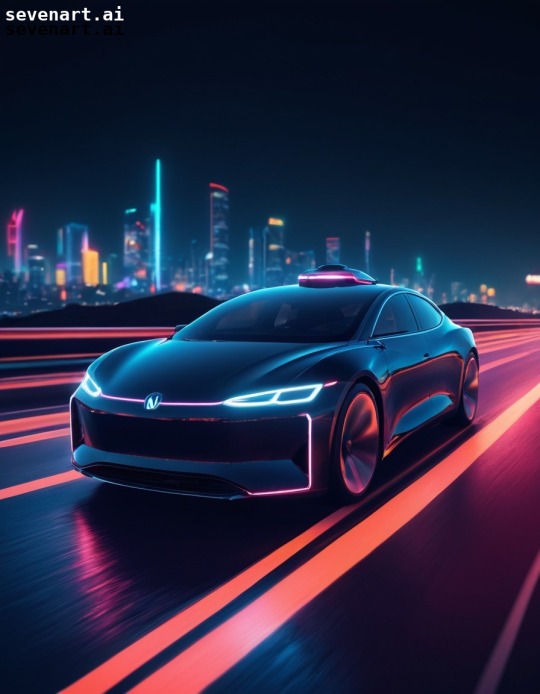
#ai#autonomous vehicles#technology#night drive#aiart#future#art#digitalart#futuristic#transportation
0 notes
Text
Tesla’s Full Self-Driving System: A Lifesaving Journey
Introduction
In the realm of automotive innovation, few names resonate as powerfully as Tesla. The electric vehicle (EV) giant, led by the enigmatic Elon Musk, has consistently pushed the boundaries of what’s possible on the road. But it’s not just about sleek designs, ludicrous acceleration, or zero emissions. Tesla’s Full Self-Driving (FSD) system has quietly been making waves, and its impact…
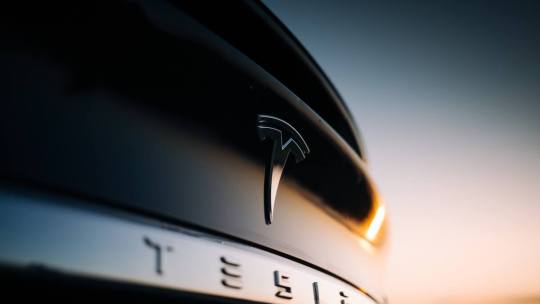
View On WordPress
#Autonomous Vehicles#Full Self-Driving (FSD)#Human-Machine Interaction#Lifesaving Technology#Tesla#tesla powerwall#tesla roof#tesla suv
0 notes
Text
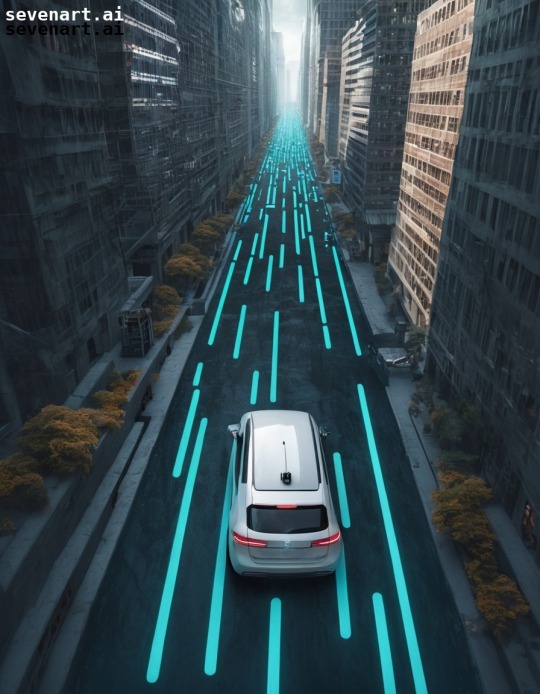
#technology#self-driving car#aiart#autonomous vehicle#urban landscape#digitalart#city streets#city#modern city#ai#art
0 notes
Text
Rivian Introduces R2, R3, and R3X Built on New Midsize Platform
LAGUNA BEACH, Calif. March 7, 2024 – Rivian today unveiled its new midsize platform which underpins R2 and R3 product lines.
R2 is Rivian’s all-new midsize SUV delivering a combination of performance, capability and utility in a five-seat package optimized for big adventures and everyday use. The silhouette and face of R2 are distinctly Rivian. The powered rear glass fully drops into the…

View On WordPress
#acceleration#adventure#Adventure Gear#affordability#all-new platform#automotive engineering#Automotive Technology#autonomous capabilities#autonomous driving#battery#capital efficiency#cash visibility#commercial vehicles#consumer services#cost savings#crossover#design innovation#design language#direct sales#drive unit#Durability#electric mobility#electric vehicles#emission reduction#energy density#environmental preservation#fast charging#feature growth#global transition#haptic controls
0 notes
Text
youtube
Self-driving cars, also known as autonomous vehicles or driverless cars, are a revolutionary technological advancement poised to transform the way we commute, travel, and interact with our urban and rural environments. In this video, we'll discuss the progress made by Tesla in their development of self-driving cars, and how close we are to achieving this technology.
Self-driving cars are equipped with a range of sensors such as LiDAR, cameras, radar, and ultrasonic sensors. These sensors provide the vehicle with a comprehensive view of its surroundings, allowing it to perceive other vehicles, pedestrians, road signs, traffic lights, and obstacles in real-time.
The heart of self-driving cars lies in their AI systems. These AI algorithms process the data from sensors to make complex decisions and control the vehicle's movements. Machine learning and deep learning techniques are used to teach the AI system to recognize patterns, predict the behaviors of other road users, and respond appropriately to various scenarios.
Self-driving cars rely on high-definition maps to understand their location and the environment. These maps provide information about lane markings, road geometries, traffic signs, and more. Simultaneous Localization and Mapping technology is used to continuously update the vehicle's position within the mapped environment.
Self-driving cars represent a technological frontier that holds the promise of safer, more efficient, and more accessible transportation. While there are hurdles to overcome, ongoing advancements in AI, sensor technology, and infrastructure development continue to push the boundaries of what's possible in the realm of autonomous vehicles.
Self-Driving Cars: How Close We Are?
#self driving cars#self driving#self driving car#self-driving#driverless car#driverless cars#artificial intelligence#self-driving vehicles#full self driving#self-driving car tesla#self driving cars 2023#autonomous vehicles#autonomous vehicles technology#autonomous car#self-driving technology#autonomous driving#automated driving#tesla full self-driving cars#LimitLess Tech 888#how close are we to self-driving cars#Youtube
1 note
·
View note
Text
Fun Fact: The whole “AI favoriting white people” thing isn’t just a problem with image generation and job applications. Autonomous Driving Assistant Systems (ADAS) are also worse at detecting black people. This includes everything from Tesla’s Full-Self Driving and General Motor’s Super Cruise to a Honda Fit’s basic Automatic Emergency Braking (AEB) system. The systems all have trouble detecting people with darker complexions and stopping the vehicles like they’re supposed to.
4 notes
·
View notes
Text
youtube
Self-driving cars, also known as autonomous vehicles or driverless cars, are a revolutionary technological advancement poised to transform the way we commute, travel, and interact with our urban and rural environments. In this video, we'll discuss the progress made by Tesla in their development of self-driving cars, and how close we are to achieving this technology.
Self-driving cars are equipped with a range of sensors such as LiDAR, cameras, radar, and ultrasonic sensors. These sensors provide the vehicle with a comprehensive view of its surroundings, allowing it to perceive other vehicles, pedestrians, road signs, traffic lights, and obstacles in real-time.
The heart of self-driving cars lies in their AI systems. These AI algorithms process the data from sensors to make complex decisions and control the vehicle's movements. Machine learning and deep learning techniques are used to teach the AI system to recognize patterns, predict the behaviors of other road users, and respond appropriately to various scenarios.
The AI system of a self-driving car interfaces with the vehicle's control systems, including the steering, throttle, and brakes. It translates its decisions into precise actions to navigate the vehicle safely and efficiently.
Self-driving cars rely on high-definition maps to understand their location and the environment. These maps provide information about lane markings, road geometries, traffic signs, and more. Simultaneous Localization and Mapping technology is used to continuously update the vehicle's position within the mapped environment.
Communication technology plays a crucial role in the functioning of self-driving cars. These vehicles can exchange information with each other and with infrastructure elements like traffic lights and road sensors. This communication enhances safety and enables cooperative maneuvers.
Self-driving cars represent a technological frontier that holds the promise of safer, more efficient, and more accessible transportation. While there are hurdles to overcome, ongoing advancements in AI, sensor technology, and infrastructure development continue to push the boundaries of what's possible in the realm of autonomous vehicles.
Self-Driving Cars: How Close We Are?
#self driving cars#self driving#self driving car#tesla#self-driving#driverless car#driverless cars#artificial intelligence#self-driving vehicles#full self driving#self-driving car tesla#self driving cars 2023#autonomous vehicles#technology#autonomous vehicles technology#autonomous car#self-driving technology#autonomous driving#automated driving#tesla full self-driving cars#LimitLess Tech 888#how close are we to self-driving cars#tesla cars#Youtube
1 note
·
View note
Text
Are you ready to take your career to new heights? Look no further than KPIT Technologies! Kpit Careers page is a gateway to a world of exciting opportunities, where innovation meets passion. Let's delve into what makes our careers at KPIT truly exceptional.
Explore Diverse Job Openings
Discover a myriad of job openings at kpit catering to diverse skill sets and expertise. Whether you're an IT professional, an engineer, or a creative mind, we have a place for you. Our commitment to innovation and cutting-edge technology ensures that you'll be working on projects that shape the future.
#Career at kpit#jobs at kpit#career growth in kpit#Jobs in Automotive Engineering#Jobs in Self driving cars#Jobs in Autonomous Driving#Jobs in Connected Vehicles#Jobs in Automotive industry#Automotive domain jobs#Indian Automotive companies#Automotive companies#Leading automotive companies#Best company to work in automotive domain#Automotive technology jobs
0 notes
Text
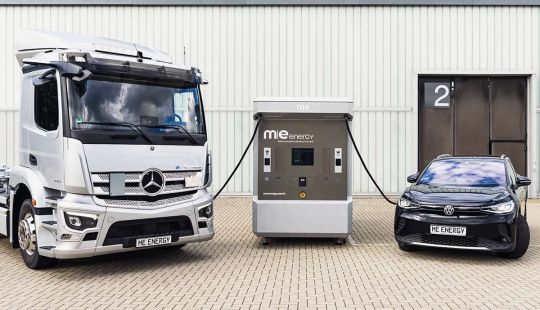
محطة الشحن السريع New Me Energy قادرة على توليد الكهرباء الخاصة بها من الإيثانول الحيوي: 4000 كيلووات في الساعة ويتم إعادة شحنها في وقت قياسي
https://meenergy.earth/en/
#electric car#self-driving cars#technology#smartcity#electricvehicles#autonomous vehicles#selfdriving#dream car
0 notes